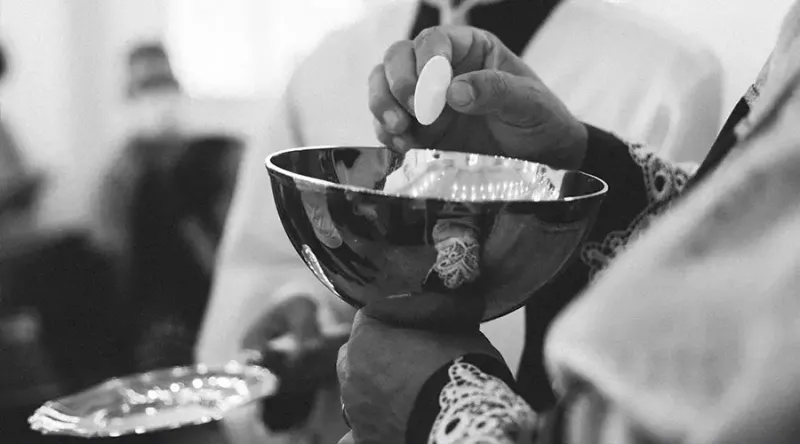
Denver Newsroom, Sep 7, 2022 / 12:09 pm (CNA).
Father Gonzalo Marín García, a priest of the primatial cathedral of Colombia in Bogotá, said in a statement released Sept. 6 that a ciborium containing the Eucharist that was used for daily Mass has been stolen from the cathedral.
Marín said the Archdiocese of Bogotá wanted to inform the general public “that in recent days a small ciborium where the Eucharist is reserved and is for daily use was stolen.”
The priest explained that the liturgical vessel is “approximately 15 centimeters in height” (about 6 inches) and was “recently manufactured,” so “it was not part of the artistic, religious, and patrimonial collection kept in the cathedral.”
Marín reported that a complaint has already been filed with the authorities, so that a “corresponding investigation” could be conducted.
Elmer Rojas, a councilman from Bogotá, commented on Twitter that this “worrisome theft is in addition to that of two Christian churches in Kennedy (a city district) in recent days. The insecurity in the city affects everyone and the (district’s administration) doesn’t seem to care.”
The primatial cathedral of Colombia has been a witness to the events that have taken place in the country and constitutes an epicenter of faith and a benchmark for culture and art, since its history dates back to the founding of the city on Aug. 6, 1538.
In its 200 years of existence, the current cathedral has welcomed figures such as the pontiffs St. Paul VI, St. John Paul II, and Pope Francis.
This story was first published by ACI Prensa, CNA’s Spanish-language news partner. It has been translated and adapted by CNA.
If you value the news and views Catholic World Report provides, please consider donating to support our efforts. Your contribution will help us continue to make CWR available to all readers worldwide for free, without a subscription. Thank you for your generosity!
Click here for more information on donating to CWR. Click here to sign up for our newsletter.




It would seem as though the pastors of churches are being willfully blind to reality. This is not 1930, where people , even the criminal types, had a sort of code which did not allow for the desecration of churches. Stealing a ciborium falls into that category. I have suggested repeatedly that like it or not, pastors need to beef up security within their churches to prevent such desecration. Gates, locked doors, camera/alarm systems. The pastors may not like this but it needs to be done and the sooner the better. Between the flat out criminal types we face today, and the maladjusted abortion “activists” who feel the church is fair game, incidents of desecration are bound to increase. Better to install security now.If not, I recall a folk saying about closing the barn door after the horse has already escaped.